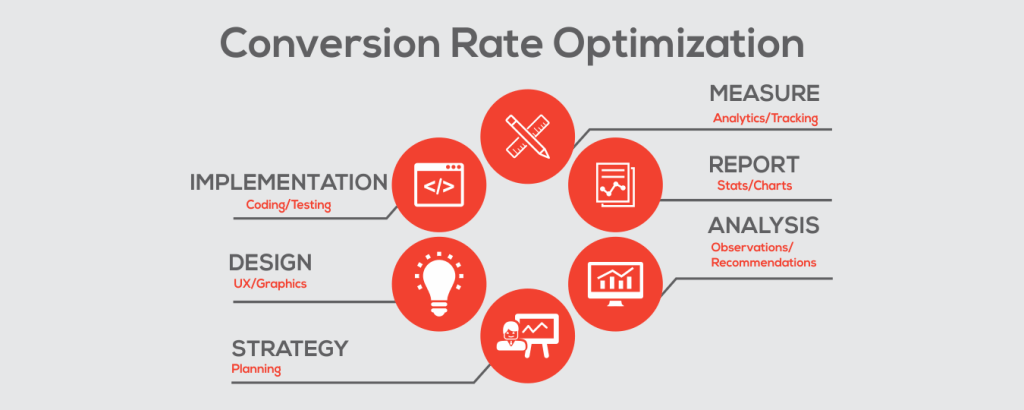In the online world, your website is like a digital shop window. It’s where people peek inside to see what you offer. But what if they peek and leave without doing anything? That’s where conversion rate optimization (CRO) steps in. It’s like giving your window a makeover to make people want to come inside and stay a while. Let’s learn about conversion rate optimization in detail.

What is Conversion Rate Optimization?
Let’s break it down. Conversion rate optimization is refining your website to encourage visitors to take action, whether it’s making a purchase, signing up for a newsletter, or filling out a contact form.
Why is CRO Important?
Imagine you have a physical store. People walk in, but they leave without buying anything. That’s not good for business, right? Similarly, if people visit your website but don’t convert, you’re missing out on potential customers and revenue.
Understanding Your Audience
Before you can optimize for conversions, you need to understand your audience. Who are they? What are their needs and pain points? What do they want from your website?
Simplifying Your Website’s Navigation
Think about the last time you visited a cluttered store. It was probably overwhelming, right? The same goes for websites. Simplify your navigation to make it easy for visitors to find what they want.
Crafting Compelling Calls-to-Action (CTAs)
A call-to-action is like a signpost directing visitors toward the next step. It could be a button that says “Buy Now” or “Sign Up.” Make your CTAs clear, concise, and compelling.
Building Trust with Social Proof
Imagine you’re trying a new restaurant. If it’s crowded and people are talking about good food, you’re more likely to try it, right? The same principle applies to your website. Include testimonials, reviews, and trust badges to build credibility for your website.
Optimizing Your Forms
Have you ever abandoned a form because it asked for too much information? Keep your forms short and sweet. Only ask for essential information to reduce friction and increase conversions on your websites.
A/B Testing: Experiment and Learn
What works for one website may not work for another. That’s where A/B testing comes in. Create variations of your website elements (like CTAs or headlines) and see which one performs better. It’s all about experimenting and learning what resonates with your audience.
Analyzing Data and Iterating
Data is your best friend in the world of CRO. Use tools like Google Analytics to track visitor behavior, identify bottlenecks, and uncover opportunities for improvement. Then, iterate and refine your website based on what you learn.
Conclusion
Conversion rate optimization isn’t a one-time task; it’s an ongoing journey. By understanding your audience, simplifying your website, crafting good CTAs, building trust, optimizing forms, and using data, you can unlock your website’s full potential and drive meaningful results.
Remember, Rome wasn’t built in a day, and neither is a perfectly optimized website. But with patience and a commitment to continuous improvement, you can take your website from good to great and turn visitors into loyal customers along the way.

